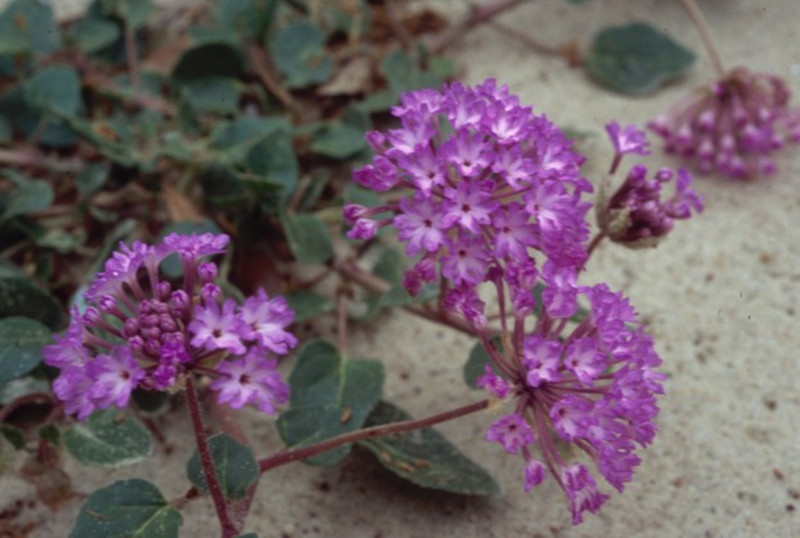
Abronia macrocarpa Facts
- First of all, the Abronia macrocarpa remains a very rare and endangered type of flowering plant. Unfortunately, however, this species also has an extremely small natural territory remaining.
- Furthermore, experts did not identify the plant until 1972. The primary reason for this was the simple fact of its scarcity and distribution. Amazingly, it still does not have a common name.
- This surprisingly delicate seeming beauty also has an ability that belies its appearance of fragility. That’s because it seems either adapted to or evolved to survive in, an extremely particular environment.
- Despite being found only in a tiny portion of North America, it holds no status with the IUCN as of yet. However, it does hold the listing of an Endangered Species within the country it inhabits.
Related Articles
CCL: https://bit.ly/2TOaaKb
Abronia macrocarpa Physical Description
Firstly, the Abronia macrocarpa appears to be a moderate sized perennial species. The stems of this species also grow roughly vertically. Each individual specimen attains an average height of roughly 20 in (50 cm).
Further, the leaves average about 2 in (5 cm) in length and 1.4 in (3.5 cm) in width. These also grow thick and develop a covering of small, sticky hairs. Meanwhile, the flowers develop roughly funnel-shaped, and bright pinkish purple in color.
It also becomes strongly scented to attract multiple native moth species. The strongly scented blooms also develop in large clusters. Finally, the fruit of the Abronia macrcarpa grows uniquely heart-shaped in general structure.
- Kingdom: Plantae
- Phylum: Angiosperms
- Class: Eudicots
- Order: Caryophyllales
- Family: Nyctaginaceae
- Genus: Abronia
- Species: A. macrocarpa
CCL: https://bit.ly/2TOaaKb
Abronia macrocarpa Distribution, Habitat, and Ecology
Most notably, the tough little beauty that we know as the Abronia macrocarpa remains highly restricted. That’s because it only continues to exist within restricted portions of three counties in Texas, in the United States. It remains unknown if the plant once had a more extensive range.
In addition, its only known groupings sit in either rather sandy areas or savannah-like woodland areas. That also represents a bit of a mystery. Experts remain unsure if it ever inhabited any other types of habitat.
But sadly, the lovely plant continues to face threats to its survival. Two primary threats to its continued existence exist. These include further loss of habitat due to exploration for oil and development of the land for human use. However, climate change also now poses a further threat.
The plant produces a rather long taproot. It does this to increase its ability to absorb water from the soil of its typically arid habitat. Finally, the plant also becomes dormant after the summer and survives as a taproot.
Species Sharing Its Range
Check out our other articles on Spectacular Dolphins Throughout Our World, Indian Giant Squirrel, Ebor Falls, Jamaican Iguana, Hummingbird Fuchsia, Armored Sea Robin, Giant Leopard Moth
